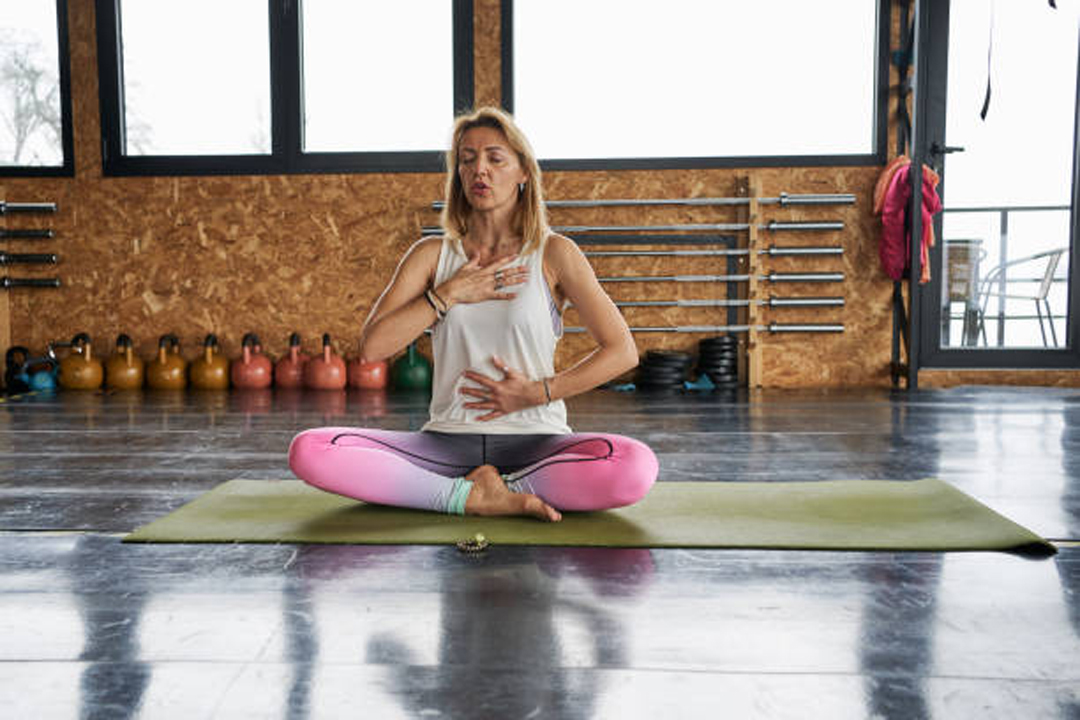Breathing therapy is an easy and very effective way to control blood pressure. It doesn’t require any equipment, unless you want to use something like RESPeRATE, which is covered under “Devices to Help Lower Blood Pressure.” Also, breathing therapy can be done at any time and in any place, which makes it very useful. Let’s look at how breathing exercises can help you keep your blood pressure under control.
How to Do Exercises for Breathing
Most of the time, when people are stressed, they tend to breathe quickly and shallowly. Unfortunately, this way of breathing only lets the body get a small amount of oxygen. On the other hand, breathing slowly and deeply can wake you up. It’s important to remember that there are a lot of different ways to breathe, and some are much better than others. Pranayama, which is another name for yogic breathing, is a set of techniques for controlling your breath and breathing that can help keep your body and mind healthy and strong.
Even if you don’t do yoga regularly, these two yogic breathing exercises can help you. Both exercises can help lower blood pressure, and if you have time, you should do them more than once a day.
Nadi Shodhana
Nadi shodhana, which is also called “alternating nostril breathing,” is one of the most important techniques for pranayamas, which are breathing exercises. The word “Nadi” refers to the energy pathways that allow life force or energy (called “prana”) to move through the body.
- Start nadi shodhana by sitting comfortably and putting your left hand on your left knee.
- Take a slow, deep breath and close or don’t close your eyes.
- Next, close your right nose with your right thumb and slowly breathe out through your left nose.
- While your thumb is still covering your right nostril, take a deep breath through your left nostril.
- At the top of your inhale, close your left nostril with the little finger and ring finger of your right hand. Then, let your breath out through your right nostril while closing your left one.
- Breathe in through your right nostril without pausing, while keeping your left nostril closed.
- Finally, let out your breath through your left nostril while closing your right one.
- One cycle of breathing, called anuloma viloma, is now over. Repeat this cycle a few times. Ideally, you should do this exercise more than once a day. Bonus: Nadi shodhana is a powerful breathing exercise that can also help with headaches, asthma, and sleeplessness.
Bumblebee Taking a Breath

Brahmari is a type of Pranayama that helps people with high blood pressure, as well as those who want to feel less stressed and have more energy. This method is called “bumblebee” because you have to close your lips and make a humming sound in your throat. When it’s done right, your face and throat should start to shake. Most kids like this breathing exercise, so you can invite them to do it with you.
It is best to practice Brahmari several times a day to get the most out of it. It’s important to learn this technique with the help of a trained yoga teacher or by talking to your doctor first.
- Sit in a comfortable way with your back and neck straight. Your hands should be on your knees.
- Slightly open your mouth and loosen your jaw.
- Raise your arms up and put your elbows out to the sides. Lightly put your thumbs over your ears.
- Gently touch your forehead above your eyebrows with your index finger, and cover your closed eyes with your two middle fingers.
- Put your little fingers on the sides of your nose, but don’t press down on them.
- Take a slow, deep breath in.
- Close your mouth and slowly breathe out through both nostrils.
- Make a humming sound in your throat as you breathe out. Try to make the sound as loud, clear, and continuous as you can. Your throat and face should also feel vibrations. This may take some time to learn, so don’t give up.
- Do these exercise several times a day for two to three minutes each time. When you’re done, slowly open your eyes and let go of your fingers. During this exercise, don’t force yourself to breathe.
Is breathing therapy effective?
Research shows that doing breathing exercises can lower blood pressure in as little as a few weeks and sometimes right away, especially in cases of “white coat hypertension.” For example, in a study with 73 people, 62% of whom had white coat hypertension, researchers looked at how a short deep-breathing exercise helped people whose blood pressure was taken twice in a doctor’s office. After just 30 seconds of deep breathing, participants’ systolic blood pressure dropped by an average of 15 mmHg and their diastolic pressure dropped by about 6 mmHg. The goal of this study was to see if deep breathing exercises could help find white-coat hypertension. It also shows that deep breathing exercises have a positive effect on blood pressure levels.
To lower blood pressure, there are many ways to practice deep breathing. For example, the International Journal of Yoga Therapy found that a yoga breathing technique called sukha pranayama, which involves taking precise breaths at a rate of six breaths per minute for five minutes with equal lengths for inhaling and exhaling, was good for people with high blood pressure in terms of their heart health.
The study showed that adults who did sukha pranayama for five minutes had a very significant drop in their systolic blood pressure and a significant drop in their heart rate. It’s not clear how long these benefits last, but it’s possible that practicing this technique for just five minutes a day could lead to continued benefits.
In another study, 21,563 people were asked to take their blood pressure at a doctor’s office before and after doing deep breathing. The authors said that deep breathing lowered both systolic and diastolic blood pressure by a lot in just 30 seconds.
Yoga breathing exercises that you do every day can have a big effect on your blood pressure. In one study, eight people who were on the verge of getting high blood pressure learned about yogic Pranayama and practiced it every day for six weeks. This caused an 11-point drop in systolic blood pressure and an 8-point drop in diastolic blood pressure. Even three weeks after the study was over, these levels stayed the same. Yogic breathing is a simple technique that can be learned and practiced every day at home. It has been shown to lower blood pressure.







